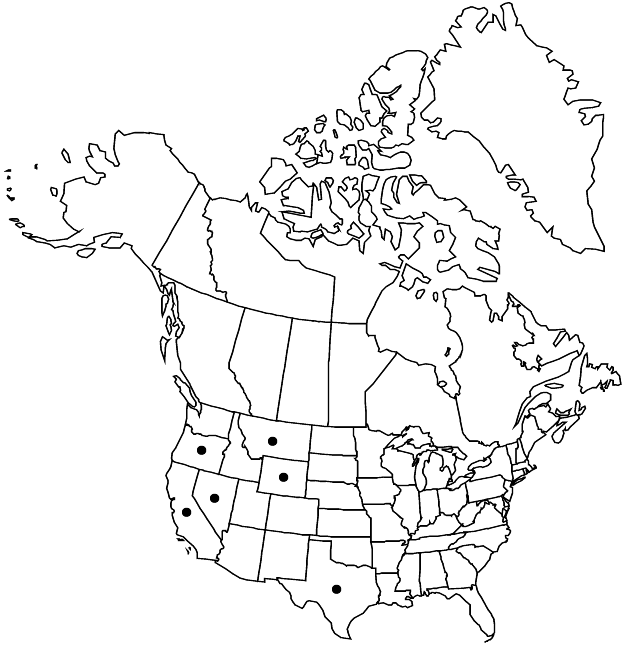Difference between revisions of "Crassula solieri"
Bot. Jahrb. Syst. 17: 239. 1893,.
FNA>Volume Importer |
imported>Volume Importer |
||
| (2 intermediate revisions by 2 users not shown) | |||
| Line 51: | Line 51: | ||
|publication year= | |publication year= | ||
|special status= | |special status= | ||
| − | |source xml=https:// | + | |source xml=https://bitbucket.org/aafc-mbb/fna-data-curation/src/2e0870ddd59836b60bcf96646a41e87ea5a5943a/coarse_grained_fna_xml/V8/V8_304.xml |
|genus=Crassula | |genus=Crassula | ||
|species=Crassula solieri | |species=Crassula solieri | ||
Latest revision as of 22:42, 5 November 2020
Plants aquatic or terrestrial, annual. Stems erect when stranded, reddish purple in age, somewhat branched, 2–10 cm. Leaf blades oblong to linear, 1–5 mm, apex obtuse. Inflorescences lax; flowers 1 per node. Pedicels 0.5–6(–10) mm. Flowers 4-merous; sepals triangular-ovate to lanceolate, 0.4–1 mm, apex rounded to obtuse; petals lanceolate, 1–1.5 mm. Follicles ascending, 6–14-seeded, obliquely lanceolate; old follicles spreading, flat. Seeds oblong-ellipsoid, 0.3–0.6 × 0.1–0.3 mm, not papillate, shiny, smooth.
Phenology: Flowering spring.
Habitat: Vernal pools, shores of lakes and streams
Elevation: 0-2100 m
Distribution

Calif., Mont., Nev., Oreg., Tex., Wyo., Mexico (Baja California), South America (Chile).
Discussion
Described from Chile, Crassula solieri was overlooked in North America, not distinguished from C. aquatica before it was recognized by M. Bywater and G. E. Wickens (1984).
Selected References
None.